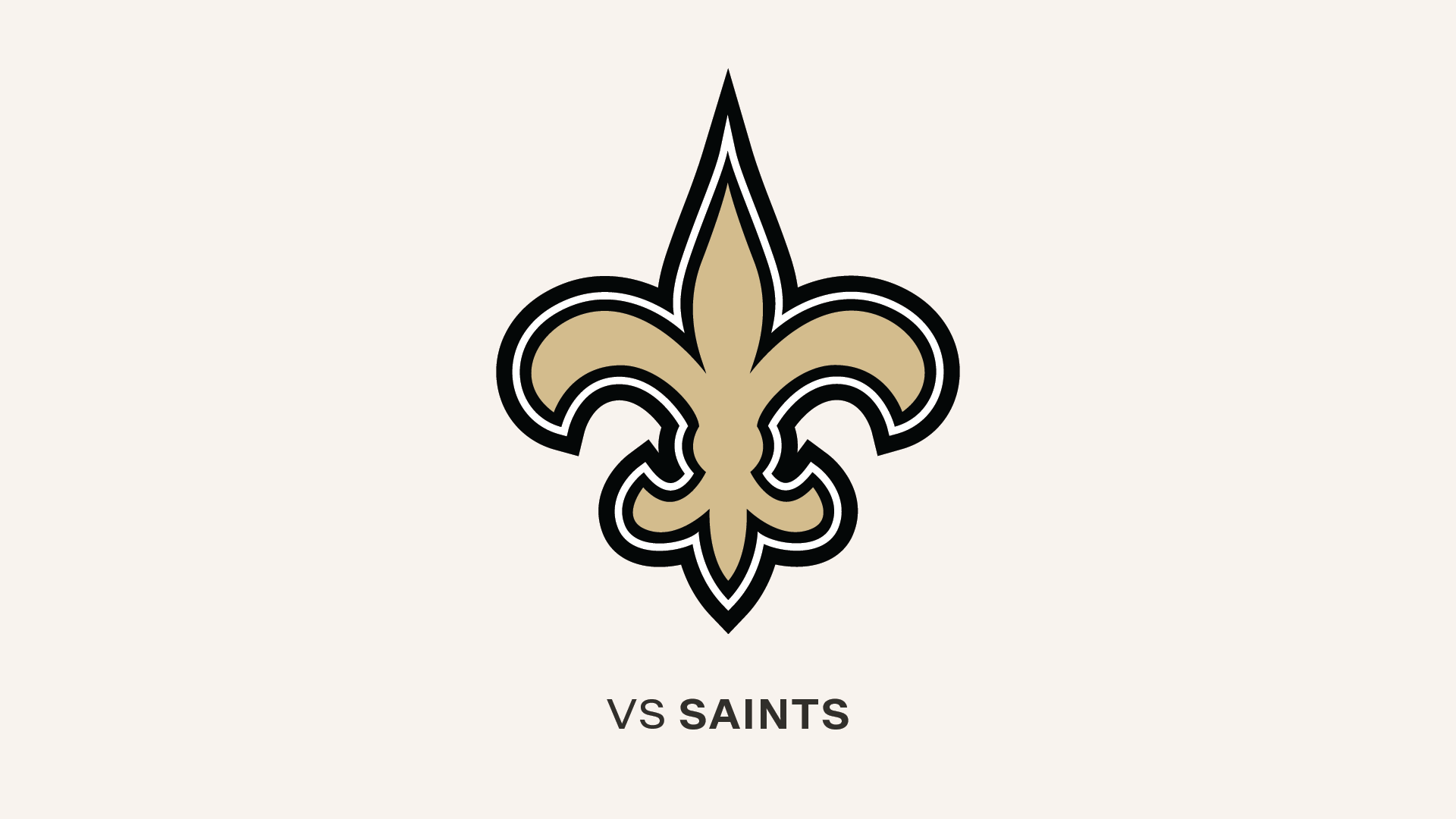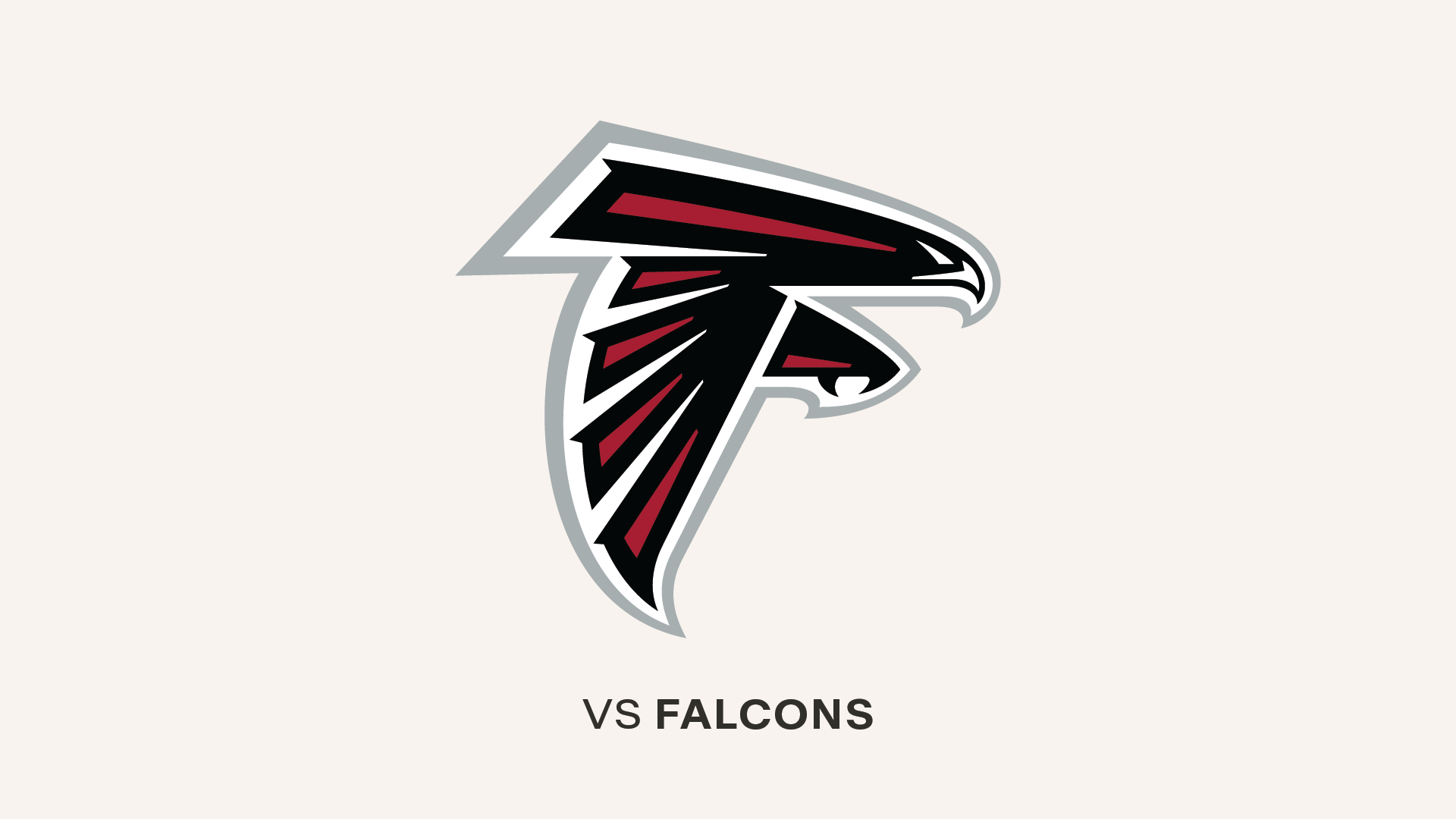Okay, here's the deal.
You may recall that before I made my (triumphant?) return this past January, I had spent several years away from the Buccaneers and my trusty mailbag, finding work where I could get it. If you've read many of my columns here on Buccaneers.com, you probably also know that I love this job more than anything else I've done, despite my ability to fly (see the live photo above) and the cool occupations to which that should lead.
Unfortunately, those pronouncements didn't prove too helpful from a negotiation standpoint. Let's just say I didn't have a whole lotta leverage when the Bucs and I were working out a new contract in January. The agreement was, I get to do my column (yay!) but when the season comes along and everything gets crazy busy, I've got to pitch in wherever and whenever they need me (yay?). I'm not talking building maintenance, for two obvious reasons. One, we have talented people here to handle that and, two, I'm absolutely clueless with all that stuff. Or, as the Answer Wife would say, "Oh, big superhero can melt cars with laser beams from his eyes but he doesn't know how to handle a reciprocating saw."
The point of all of this is that now the season is upon us (around here, the opening of training camp is when it all begins) and I'm going to be busy driving players to the hotel, washing dishes, directing traffic in the parking lot, etc. Later today, in fact, the equipment guys need somebody to stand in front of the Jugs machine so they can test how fast they can fire the footballs before they start to break fingers. That means less of the Answer Man on Buccaneers.com.
During the football season, my column schedule is going to slow down considerably, though I promise to pump it back up as soon as the Bucs' season is over (which will hopefully not be until February). However, so that I don't completely disappear for the next five or six months, I'm going to take a different approach and give you shorter columns here and there. I'll answer maybe three or four questions in each one and then get back to my other jobs around the building. That way, hopefully, y'all won't completely forget about me in the months to come.
In fact, I'm going to slide into the season with a couple of those Answer Man Lite columns, starting right here. Normally, I would space my columns out a couple weeks apart, and I just posted one last Friday. Instead, I'm going to do a Lite one this week and another Lite one next week, just before camp starts.
Yes, that means the mailbag is going to get a little backlogged, and for that I'm sorry. I'll try to cherry-pick some of the most interesting questions, and I'll try not to let repeat customers into the mix too often (I'm looking at you, Jake from Ishpeming). My apologies in advance if you have to wait a long time for an answer to a good question.
Let's not wait any longer here, however. On to your (short list of) questions!
**
- Sam C. of Newmarket, Ontario asks:
What city had the shortest lifespan holding onto an NFL team? Which is the longest running franchise? Which team has bounced around form city to city the most? Which team has the longest span of years not winning the Super Bowl?
Answer Man: Hey, given what I just explained above, I could just count this as four questions and be done with it, right? Right, Buccaneers.com editors?
Apparently not.
So let's take them one at a time. First: What city had the shortest lifespan holding onto an NFL team?
I'm going to answer this question two ways, because the first way, while accurate, probably wouldn't be that satisfying. You see, in the early days of professional football, teams came and went fairly regularly as the sport tried to catch on with a public that already had baseball entrenched as "America's Game."
Star players like Jim Thorpe helped the game catch on a bit in Ohio in the 1910s (is that how you write that? Should it be nineteen-teens? Whatever) but, as the NFL's wonderful Record & Fact book puts it, "Pro football was in a state of confusion [in 1920] due to three major problems..." Those problems were rising salaries, too much team-to-team movement of players and college players being allowed to play in the pro leagues. Thus, a handful of teams got together in auto showroom in Canton, clarified the rules and created the American Professional Football Conference, which would change its name to the National Football League two years later.
So we begin in 1920 when we're talking about the history of the NFL. There were 14 teams in the league that year, though no official standings were maintained, long-forgotten clubs like the Cleveland Tigers and Columbus Panhandles. There was a great disparity in the talent levels from team to team, and several teams simply disbanded and gave up their franchises after that first year, including the Chicago Tigers and the Detroit Heralds. (Yeah, with crazy names like the Panhandles and the Kardex - the pride of Tonawanda in 1921 - available, you still have two teams in the original league named the Tigers. Real imaginative.) So you could say that Chicago and Detroit were the first two cities to lose a team, after exactly one season.
Of course, that first season also included a team called the Chicago Cardinals, which just happens to be the exact same franchise that is now playing in Arizona (spoiler alert on parts two and three of Sam's question), so it's not like professional football abandoned the Windy City. And the Detroit Tigers started play in 1921, so that city was still in the game, too.
Maybe, then, we should go with the Kardex, who were alternately known as the Lumbermen. According to trusty Wikipedia, both names were a result of the team presumably being sponsored by an office supply company named American Kardex. The Kardex had been playing as what I guess you would call a "semi-pro" team (known as the All-Tonawanda All-Stars) since 1916 and had experienced enough success, including in occasional matchups with teams that were in or would join the NFL. Thus, Tonawanda felt it could hang in the new pro league and joined in 1921, only to be spanked 45-0 by the Rochester Jeffersons and decide, "Uh, maybe not so much." The Kardex folded after one game (Wikipedia says the team also may have had trouble scheduling opponents, but the first story is more fun.)
But I'm guessing you don't find that answer too satisfying, Sam, and that would be reasonable. Franchises were coming and going in the early years, or changing names or merging or seeing their stadiums burned to the ground (those poor Louisville Brecks), so there are a lot of possible short-lived-team answers back then. (And a lot of great names: Evansville Crimson Giants, Dayton Triangles, Bratton Greenhorns, Staten Island Stapletons, Newark Tornadoes, Providence Steam Roller, Cincinnati Celts, Racine Legion...one of those is fake. Can you guess? See the very bottom of this answer.)
So let's take it past those tumultuous early years to say, 1933. That's when the NFL made a bunch of rule changes to separate its style of play from the college game, split into two divisions for the first time and held its first league championship game, won by the Chicago Bears, 23-21, over the New York Giants.
There were 10 teams in the league that season and one of them, the Portsmouth Spartans, had only been in the league since 1931, though it had formed in 1929 and had regularly played non-league games against NFL teams and other well-known independent teams. And done quite well. The Spartans went 11-3 and finished second to the Green Bay Packers in 1931, then finished the 1932 season in a virtual tie with the Bears (Chicago was 6-1-6, Portsmouth 6-1-4 and ties were not used as part of the winning percentage back then). The two teams then played an unscheduled championship game which was included in the regular-season standings, with Chicago winning 9-0. Interest in the game is cited as one of the reasons the league went to an actual championship game the next year.
Alas, the Spartans (6-5 in 1933) were having much more trouble off the field then on, and the next year the team was bought by a Detroit radio executive, moved to that town and renamed the Lions. Yes, those Detroit Lions. So, if you want to start in 1933, Sam, I'd say the first city to lose its team to another city was Portsmouth. In that same 1934 season that the Lions were born, the Cincinnati Reds started the season 0-8, were suspended for defaulting on league payments and had their spot bought out by the St. Louis Gunners. The Gunners went 1-2 down the stretch and were never heard from again. I don't think that's quite the same thing as a team moving to another city, though, so I'm going to stick with the Spartans/Lions.
Alllllllrighty, part two: Which is the longest running franchise?
Again, I'm going to start in 1920, and you'll see in a moment that this is actually an important distinction.
Amazingly, two of the 14 teams that were a part of the NFL in that inaugural 1920 season still exist today, though neither in the same city and only one by the original nickname. We hinted at one of them above: the Cardinals. Those Chicago Cardinals eventually moved to St. Louis in 1960 and then to Phoenix (later adopting "Arizona" as their named home) in 1988. They also had one season in 1944 when, due to player shortages caused by World War II, they merged with the Pittsburgh Steelers and were known as Card-Pitt.
By the way, the Cardinals were actually formed as an amateur team in 1898 and turned pro in 1913, making them the oldest existing professional football club in the U.S.
The other original team still in existence today is the Decatur Staleys, founded by the A.E. Staley food starch company in 1919. George Halas helped run the team in that 1920 season, then bought the club in 1921 and moved it to Chicago. Halas agreed to keep the Staleys nickname for one more year, then renamed his team the Bears in 1922. That obviously makes the Bears the longest-running team in the same location.
However, that last honor is actually a tie, because the Green Bay Packers came into the league in 1921 and never left. So you could call the Packers the longest-running franchise with the same hometown and the same nickname, by one year over the Bears.
Part three: Which team has bounced around form city to city the most?
For this question, we're going to assume you mean, Which of the existing 32 teams in the NFL has the most city-to-city moves in its history. That assumption allows us to skip those aforementioned crazy years.
Well, sort of. See, there's an argument that can be made that today's Indianapolis Colts are descended from the Dayton Triangles, an original 1920 NFL team. The Triangles were sold and moved to Brooklyn in 1930 and became the Dodgers. In 1945, the Dodgers merged with the Boston Yanks, a team that four years later would move to New York and become the Bulldogs, though they would then be called the Yanks from 1950-51. That team was sold to a Texas group in 1952 and renamed the Dallas Texans, a franchise that would fold after a single 1-11 season. The "remains" of that franchise, as it is worded on Wikipedia, was then awarded to the Baltimore group that formed the Colts (which would move to Indy in 1984).
I don't know, though. The Answer Man ain't buying it. Seems to me the merging with Boston in '45 and the folding-and-remains-selling bizness of 1952 sort of break the link.
What you mainly have in the NFL is a bunch of teams that have stayed put (the Packers, Bears, Buccaneers, etc.) and a bunch of one move teams. Those would include the Colts, the Tennessee Titans (formerly the Houston Oilers), the Kansas City Chiefs (formerly the Dallas Texans...again), the Baltimore Ravens (technically an expansion team in 1996 but born of the original Cleveland Browns) and the St. Louis Rams (originally based in L.A.).
And so we come back to the Cardinals, who have twice bolted for greener pastures, as described above. I suppose you could also include the Oakland Raiders, who have only called two cities home but went from Oakland (1960-81) to Los Angeles (1982-94) and then back to Oakland (1995-present).
You could also move the Rams from that one-move group into this one, depending upon how you look at it. The first Rams team began play in Cleveland in 1936, as a part of the new American Football League, and stayed there through the 1945 season. In 1946, the Rams opened up the West Coast for the NFL (at the time, it was no further west than Chicago) by relocating to L.A and joining the league. However, the Rams franchise were officially seen as "starting over," or a "second incarnation" because it included almost none of the Cleveland Rams' players or team management when it began play in 1946.
So we're sticking with the Cardinals for part three of this question.
And now part four: Which team has the longest span of years not winning the Super Bowl?
This is by far the easiest of Sam's four sub-questions because the Super Bowl has a finite 44-year history (so far) and all the teams that were around in 1966, the season of the first one, are still around. Some have moved, the NFL and AFL have since merged and of course some teams have been added, but the 24 teams that were in play in '66 are still around to tally up.
Obviously, those 24 teams have the possibility of longer Super Bowl droughts than those that came later, such as the Seattle Seahawks or the Jacksonville Jaguars. And of those 24 teams, nine - more than a third - have still not won a Super Bowl: the Browns, Eagles, Cardinals, Falcons, Lions, Vikings, Bills, Oilers/Titans and Chargers.
We'll give a pass to the Browns because the franchise was in hibernation from 1996-98 after the original Cleveland team moved to Baltimore and became the "expansion" Ravens. Thus, the Browns' drought may be just as long in years but is, in a way, three years shorter in seasons than the other teams on the list.
Which leaves us with eight, and you can decide whose droughts are the worst. Would you go with the Browns and Lions, the only two teams of those 24 to have never even played in a Super Bowl? That's particularly tough for Cleveland, which had been a wildly successful franchise prior to the Super Bowl era, winning four NFL championships (and all four AAFC titles from 1946-49 before that league folded).
Or is the pain worse for the Vikings and Bills, both of which have made it to four Super Bowls without ever claiming the Lombardi Trophy? For the record, the Answer Man thinks it's worse for the Browns and Lions - I'd rather make it there and lose then never make it. The Eagles are 0-2 in Super Bowl play while the Cardinals, Falcons, Titans/Oilers and Chargers are all 0-1.
Just for the record, though we've already eliminated them from longest-Super-Bowl-drought contention, the other teams among the NFL's current 32 that have never won the Super Bowl are the Bengals, the Texans, the Jaguars, the Panthers and the Seahawks. The Saints were on the never-made-it-list before they triumphed in Super Bowl XLIV this past February.
Cincinnati joined the AFL in 1968 and is 0-2 in Super Bowl play. Seattle accompanied the Bucs into the league in 1976 and is 0-1. Carolina was a 1995 expansion team and it is 0-1; Jacksonville also joined the NFL in 1995 and has yet to make the big game. Houston has only been around since 2002 and they have yet to make the Super Bowl, or the playoffs for that matter.
Wait a minute, didn't I say this was going to be a shorter column? So much for that.
Oh, and the made-up name from the NFL's early years: The Bratton Greenhorns.
**
2.
Troy from Orlando, Florida asks:
Who was the center for the Bucs in the '80s? Williams?
Answer Man: Well, I'm not sure who you're referring to by "Williams." The most prominent Williams for the Bucs was Doug Williams, who was under center for the first three seasons of the 1980s, if that's what you mean. That is, he was the starting quarterback.
I don't think that's what you mean, Troy, because it would be an odd way to ask, but just in case, the quarterbacks that followed Doug in the 1980s were Jerry Golsteyn, Jack Thompson, Golsteyn again, Thompson again, Steve DeBerg, Steve Young, DeBerg again, Young again, DeBerg again, John Reaves (replacement games), Jim Zorn (replacement games), DeBerg again, Vinny Testaverde, Joe Ferguson, Testaverde again and Ferguson again for the very last Bucs game of the 1980s.
As for the other Williamses who have suited up for Tampa Bay, you have a running back (Caddy), a fullback (Ed), two wide receivers (Karl and David), two tight ends (Roland and T.J....who played a combined one game for the franchise) and two linebackers (Jimmy and Mark). No offensive linemen.
So, assuming you really want to know who played center for the Buccaneers in the '80s, I'll answer that question, and I'll also thank you for picking an easy position. See, in the entire history of the franchise, few positions have seen less turnover than center. Dan Ryczek was the primary starter in 1976 and 1977, but from 1978 through 1999, almost every game was started at center by one of three men: Steve Wilson, Randy "Bubba" Grimes (there's a nickname I missed in last week's column) and Tony Mayberry. Mayberry won't factor into this answer, as he took over the reins in 1991.
Wilson essentially took over the starting center job in the last three games of 1977 and held it, with a few injury interruptions through most of 1984 before giving way to Grimes. Starting in 1980, that means he had five seasons as the primary starter; during that time he missed 15 starts, all of them taken by either Grimes or Jim Leonard.
Grimes got five starts late in 1983 but Wilson had the job back to start 1984, making the first 13 starts. Grimes made the last three and then began his own run for the remainder of the decade (plus all but one game in 1990). The only starts Grimes missed from 1985 through 1989 were the three replacement games in 1987. Two of those went to a fellow named Chuck Pitcock; the third went to Dan Turk. Yes, that Dan Turk, the one who, despite a very good 15-year NFL career, is best remembered for a botched field goal snap for the Washington Redskins in a playoff game against the Buccaneers in 1999. Turk passed away from testicular cancer in 2000.
So the answer to who played center for the Bucs in the 1980s is: Mostly Steve Wilson and Randy Grimes with a little sprinkling of Jim Leonard and three replacement-game cameos for Chuck Pitcock and Dan Turk.
**
- Edison Ewell of Brandon, Florida asks:
I have tried to search this on my own and decided that my quest is going nowhere. I had to turn to you, almighty Answer Man. I have tried to find information on former Mr. Irrelevants, and my search has turned out to show nothing. I am interested in knowing how many of these men over the past 75 drafts have actually turned out to be quite successful or had somewhat mediocre careers in the NFL. Thanks again, and I know you won't disappoint.
Answer Man: You knew I wouldn't disappoint, huh? That was pretty optimistic on your part. I actually came thisclose to moving on to the next question just because, well, 75 years of Mr. Irrelevants?! Doesn't that seem a little excessive?
But then I remembered that the Bucs have actually had one of these, so I figured, what the heck. More on that below. However, there is NO WAY I'm doing research on Ferd Dreher and Solon Holt and the likes from the 1930s and '40s. (And before you sic me, if "Ferd" is a misprint, it's not mine.) I mean, this "Mr. Irrelevant" thing - the title now given to the last player selected in the NFL Draft every year - only came about in 1976 as the brainchild of the whimsical Paul Salata. Seems fair to me to cover all the Mr. Irrelevants since '76 (also the year the Bucs joined the league, so there's that), since all the guys beforehand were only retroactively titled as such.
And, really, Edison, how much did you really search? I know Wikipedia is not necessarily the most reliable source on all topics but really, there's a whole Mr. Irrelevant page right there, complete with a listing of every player so honored and links to some of the more prominent ones. Yes, I'm kind of giving away how little work I had to do for this one, but I thought it was worth it to call Mr. Ewell out. I am not your personal search engine, people!
Anyway, the only time the Buccaneers have executed the very last pick in the draft was in 1993, when they drafted Akron kicker Daron Alcorn (who could also punt a little). The Answer Man was around back then, and if memory serves Alcorn was sort of grumpy about the whole thing. Most guys get a kick out of it, especially the whole Irrelevant Week celebration that Salata puts on in Newport Beach every year. Alcorn didn't make it with the Bucs (undrafted stud Michael Husted beat him out) nor elsewhere in the league, so he's not on the list for your answer.
Given the choices since 1976, I'd probably go with Jim Finn, the 1999 Mr. Irrelevant, as the most successful one. Finn was selected last by the Chicago Bears but saw his first playing time with Indianapolis the next year. He later ended up with the New York Giants and eventually worked his way into the starting lineup at fullback. His four-year run as the starter (2003-06) eventually ended due to injuries and the arrival of Madison Hedgecock.
The Patriots drafted linebacker Marty Moore with the last pick in 1994 and he stuck in the league as a special-teamer. In fact, Moore became the first Mr. Irrelevant to play in a Super Bowl, when he appeared in SBXXXI with New England. Moore eventually fashioned a very nice eight-year NFL career, most of it with the Patriots. Center Matt Elliott made the Redskins roster in 1992 after being Mr. Irrelevant a few months earlier and played in all 16 games. He also started 32 games for the Patriots over three seasons in the mid-90s.
If Finn is in the lead, he may soon have some stiff competition. The last two Mr. Irrelevants before Weber State WR Tim Toone took the title this past April with the Detroit Lions are both in position to stand out in 2010 and beyond. The 2008 winner, linebacker David Vobora was the opening-day starter at strongside linebacker for the St. Louis Rams last year. And the 2009 winner, kicker Ryan Succop, won that job with the Kansas City Chiefs and is likely to stick for awhile after impressively nailing 25 of his 29 field goal attempts last fall.
Well, turns out you were right Double-E. I didn't disappoint. And since that one was so easy (thanks Wikipedia!), I'll do one more in this abbreviated column.
**
- Nate of Rochester, New York asks:
Under the new rules for overtime in the playoffs what would happen if the team that is kicking off first does an onside kick and recovers and scores a field goal on the subsequent possession. Does the opposing team still get another possession? Is the game over?
Answer Man: Great, great question, Nate, but also one that is pretty easy to answer, as it turns out.
First, for anyone who doesn't know what Nate is talking about, the NFL voted at it's league meetings this spring to change the way overtime is handled, but so far only in the postseason. Enough of the league had decided that the coin flip to start overtime had become too important. With the steady overall improvement of NFL kickers, the theory was, it was too easy for the team that won the flip to drive 30 or 40 yards and kick a field goal to win it, without the other team ever getting its hands on the football.
So now we have modified sudden death (in the playoffs, at least). A team can no longer win with a first-possession field goal. Here are the two main aspects of the rule:
- Both teams get the chance to possess the ball once, unless the team that receives the opening kickoff scores a touchdown on its initial possession.
- If the team with the first possession kicks a field goal on that possession, the other team gets the opportunity to possess the ball. If the second team then scores a touchdown, it wins. If it doesn't score, the initial team wins. If it kicks a field goal to tie the game, now you're in real sudden death, where the next score of any type wins.
So here's the thing, Nate: A successful onside kick isn't a turnover. The team that is lined up to receive the kick never gets possession in this case, so it never turns it over. The team that executes the onside kick is the one that has the initial possession as described above. So, yes, if that team follows its successful onside kick by kicking a field goal, then the other team would get an opportunity to possess the football.
However, here's a follow-up question for all of us to ponder: What if a team kicks a field goal and then executes a successful onside kick? The rule above says that, after the team with the initial possession kicks a field goal, the other team gets the "opportunity" to possess the ball? Is lining up as the receiving team on a kickoff an "opportunity" to possess the ball. Did they have their opportunity and then lose it when the other team got to the kickoff first? Perhaps we can delve into that situation in next week's column.
Here's another question that comes to mind when I ponder Nate's topic, and it's related to strategy, not the rules: Do the new rules make it more or less likely that a team would attempt an onside kick in overtime?
Truth is, the Answer Man has never heard of a team trying this. The risk of this gambit is almost too high to even consider using it. If you try an onside kick from your own 30 and don't succeed, the other team will end up with the football around your 40 or 45-yard line. From there, it's only 10-20 yards to get into field goal range; you're practically handing your opponent the game if you don't succeed on the kick.
And for what? Under the old rules (and the ones that still exist for the regular season, at least for now), I suppose the motivation would be that you don't want to be that team that never touches the football. Perhaps if you've been in a 60-minute shootout and you have doubts as to your defense's ability to stop the opposition, you might be willing to give it a try.
Under the new playoff rules, one could argue that the possession-after-a-field-goal rule makes the risk a little less dire. You might think, "Well, even if we don't recover, we can hold them to a field goal and still have a shot." On the other hand, that's true whether you onside kick or not, and by giving your opposition the ball much closer to your goal line, aren't you increasing the chance that they will score a touchdown rather than a field goal? With the new rules, as is the purpose of them, the kicking team is a little less afraid of letting the opposition have the ball, and the number-one goal becomes preventing a touchdown, not preventing a score of any kind. With that in mind, it would seem to make sense to emphasize field position (e.g. with a good kickoff) over strategic risks like an onside kick.
But maybe that's just me.
**
And finally...
- Nicholas Newson of Independence, Mississippi says:
Don't have a question, just a comment: I luv the Bucs.
Answer Man: Me too, Nick. Me too.
And with that, I'm out. I'll be back again next week with another abbreviated column, and maybe that one will actually be abbreviated.




































